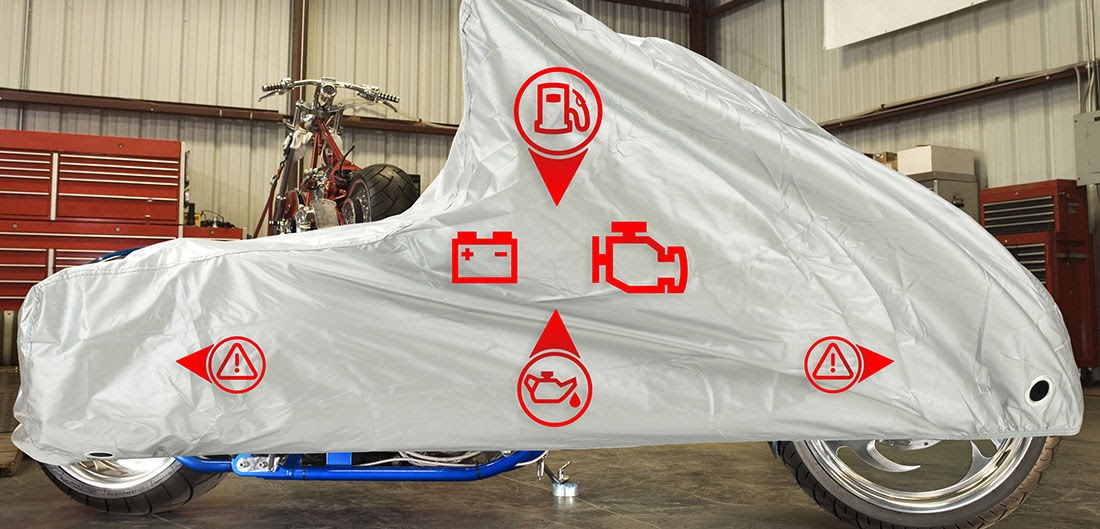Anyone who has ever stored a motorcycle during winter knows it isn’t as simple as just throwing a tarp over it and hoping for the best. In order to keep your motorcycle running in top condition, it’s important to follow these tips below before storing it for the long haul. At minimum you should take care of the fuel system and battery. Whenever parking your bike for extended amounts of time without proper care, it will become progressively damaged over time.
Have a plan ready
Depending on the type of motorcycle you ride there may be various parts that will need to be addressed, but overall there is general knowledge on preparing motorcycles for winter storage that we will cover here. The main culprit during winter is moisture, so most of our winterizing efforts will focus on combating those issues, as well as your fuel system, battery, tires, and lubrication.
Fuel System Prep
Today’s fuel contains Ethanol. Ethanol is notorious for drawing moisture. On the last ride of the season, be sure to add some gas treatment to your tank before topping it off to prevent moisture from accumulating over winter and to keep your carburetors clean. Or, better yet try to find some non ethanol fuel to leave in the bike for storage . A full tank will keep moisture from building up on the tank walls, and adding the stabilizer before storage will help a ton.
Winterize your engine
Experts tend to suggest getting a fresh oil change before storing for the best results. This makes sense because the engine will be coated in clean oil and will be the best for engine internals. If you’ll be storing your bike somewhere that gets below freezing, make sure you have adequate levels of antifreeze in your coolant system. For example, if you run just water in your coolant system and it freezes, you could eventually have a cracked head later on down the road.
Protect the battery
Batteries also have the tendency to cause issues during winter storage, especially like self-discharging when sitting over time, so it’s important to remove the battery if possible to prevent any issues in the spring. If you don’t have access to a power source where you’re storing your bike, or live in an apartment, you’ll want to remove the battery from the bike and plug it into a trickle charger indoors.
Protect the tires
If you have a center-stand for your bike, that will help the most with protecting the tires. But in case you don’t, be sure to at least get the back tire off of the ground, or even rotate the tires every few weeks for continual maintenance. If you need to leave your tires on concrete, put a piece of carpet or plywood under them to keep any moisture from seeping into them.
Cover your bike
Purchase a tarp or sheet to keep the dust off your bike, but cotton tends to attract moisture and even mildew, so you’re better off with a synthetic bike cover, which can be found at most auto parts locations.
Protect against rodents
And finally, be sure to protect against rodents. If you are storing your bike anywhere short of in the house, there is a good chance a rodent may take up residence in your bike. They like to chew wires and clog air boxes causing costly repairs in the springtime. There are many ways to keep them out, from moth balls to repellents. Be sure to guard against them, come springtime you will be glad you did!

